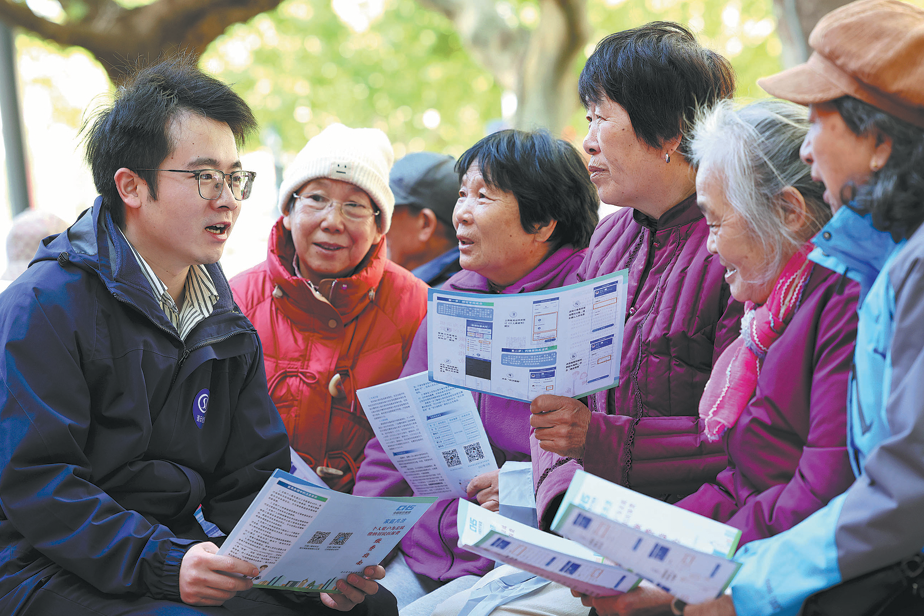Suzhou garden nears finishing in California
By LIU YINMENG in Los Angeles | China Daily Global | Updated: 2019-08-16 22:56

Thousands of miles from China, a version of the Suzhou scholars' garden, known for its seamless integration of natural landscape with pavilions and pagodas, is being built at the Huntington, a historical institution nestled in Southern California's San Gabriel Valley.
The final construction phase of Liu Fang Yuan (Garden of Flowing Fragrance) is on track for completion in May 2020, officials at The Huntington Library, Art Collections and Botanical Gardens announced Tuesday.
Phillip E. Bloom, who is the June and Simon K.C. Li Curator of the Chinese Garden and director of the Center for East Asian Garden Studies at the Huntington, told an audience of donors, library staff and journalists that the idea for the garden took shape as early as the late 1980s.
"Initially, this garden was just supposed to be a collection of Chinese plants, but as we began learning more about what a Chinese garden actually is, it became clear that the collection of Chinese plants was totally insufficient for representing the great complexity of Chinese gardens and traditions," he said.
The Huntington Library, a collections-based educational and research institution established by Henry E. Huntington, wanted to build a garden of Chinese plants 30 years ago. But its botanical garden director discovered that Chinese gardens aren't filled only with plants, they are made up of various elements, such as structures, calligraphy and paintings.
He also found out that the objective of the library's garden is similar to the scholars' gardens in Suzhou — near Shanghai on China's eastern seaboard — because just like those gardens, the Huntington Library also collects books, artworks and plants, Bloom said.
First opened to visitors in 2008, the Garden of Flowing Fragrance will expand from its initial 3.5 acres to 12 acres when its final construction phase is completed, making it one of the largest classical Chinese gardens outside of China.
Among the new features is a traditional scholar's studio called the "Flower Brush Library", which will serve as a center for cultural programs, demonstrations and exhibitions.
Adjacent to that structure is the "Studio for Lodging the Mind", an art gallery. It will be the site of an inaugural exhibition of Chinese calligraphy on May 30, 2020, which will display the works of 21 contemporary ink artists, Bloom said.
To enhance the traditional design of the work, 54 artisans from the Suzhou Garden Development Company have come from China to work on the specialized carpentry and masonry for the traditional structures for six months of the final construction phase.
Xu Xiaopin, a project manager with the Suzhou Garden Development Company and a spokesperson for the artisans, told reporters that nearly 95 percent of the materials, including tile, wood and Taihu stones, are first made in China and then assembled on site.
"Their artistry I think really gives Liu Fangyuan its authenticity and beauty," Bloom said.
He said the Chinese artisans are in the US on cultural exchange visas, which means they are learning about American culture while also sharing their own skills and experiences with local contractors and library staff.
The project has been an international partnership between Chinese and American architects, contractors and craftspersons throughout different construction stages.
Los Angeles architect Jim Fry developed the plans for the expansion, which was based on the conceptual designs of the Suzhou Institute of Landscape Architecture Design in China.
The cost of the final phase of construction is approximately $24 million, of which more than $23.5 million has been raised, according to library officials.
Former San Marino Mayor Dr Matthew Lin, who is also a donor for the Chinese garden, told China Daily that the structure, which "integrates thousands of years of Chinese history", helps visitors who have never been to China gain a better understanding of its culture.
"It has a great influence on the cultural exchanges between Chinese people in the US and Americans, as well as on the integration of people from different cultures," he said.
























